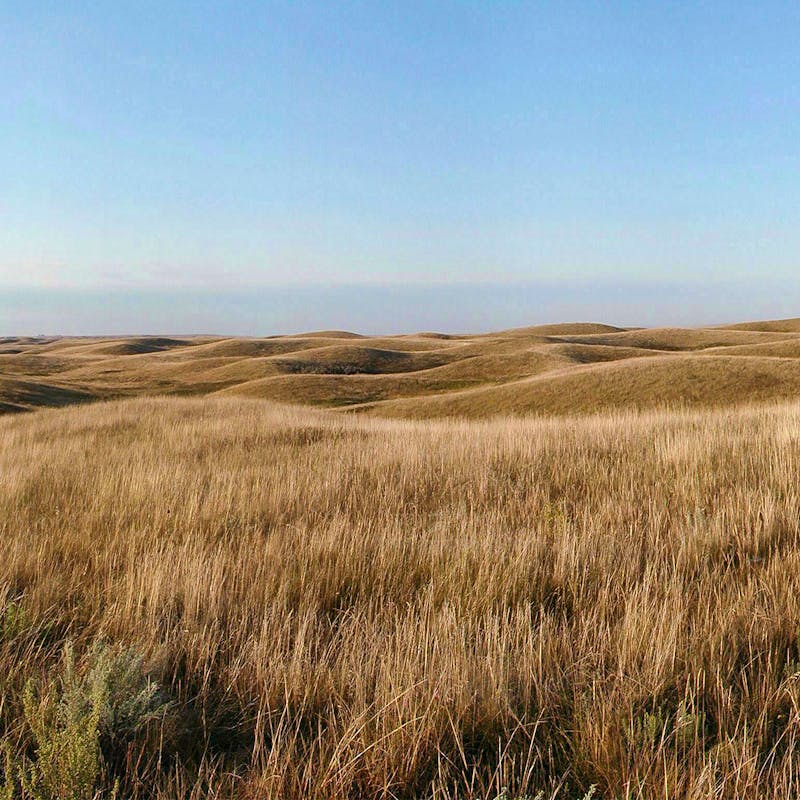What is a bison? Bison are the largest land mammal in North America and the national mammal of the United States. Bison are a successful recovery story-in-the-works after nearly being wiped out in the 1800s. They are a keystone species and essential to the health of the prairie ecosystem. Known as ‘buffalo’ by Indigenous communities, they are thought of as family members and are now returning to tribal lands, helping to heal these communities.
Read on to gain a greater understanding of these special mammals and learn more about the difference between bison and buffalo, what bison eat and the efforts to recover their populations.
Bison vs Buffalo – What’s the difference between bison and buffalo?
There are several animals in the world that are referred to as “buffalo” depending on who you ask. The three most common, however, are the Cape buffalo (Syncerus caffer) who live in Africa, the water buffalo (Bubalus arnee and Bubalus bubalis) who live in South Asia and the American bison or buffalo (Bison bison) who live in North America.
In addition to these animals living on different continents, they can also be distinguished by the presence of a hump and beards, and their horn size. American bison have a hump between their shoulders and have beards. Their horns are short and sharp. Buffalo do not have a hump or a beard but do have large — like upwards of 6 feet, large — horns.
While the term buffalo is used by Native Nations for the American bison, most biologists and naturalists use the scientific term bison.
How much does a bison weigh?
Bison weigh between 900 and 2,000 pounds. Males, or bulls, are typically larger.
How fast can a bison run?
Bison can reach speeds up to 35 miles per hour.
What do bison eat? Do bison eat hay?
Many bison managed as livestock receive supplemental feed such as hay. Bison managed as wildlife on large landscapes forage on native grasses and herbaceous plants called forbs.
Where do bison live?
Bison once roamed through grasslands and prairies from Alaska to northern Mexico. While they still graze on the prairie, they live on only a fraction of their historic range. In fact, they are considered “ecologically extinct” as a wild species because we no longer have the millions of bison roaming in herds across the Great Plains.
However, there are conservation herds on both public and tribal lands that are once again contributing to the health of our grasslands.
Most truly wild bison herds live in national parks and on private lands or reserves, with a growing number being established in cultural herds on tribal lands. Bison managed as livestock and for agriculture have some cattle genes and are handled differently than those managed as wildlife. Having dual listings as agricultural and wildlife is helping with the recovery of wild herds.
Earlier this year, Colorado signed and passed a bill designating bison in the state as a big game species, to be managed as wildlife in addition to livestock. This allows Colorado Parks and Wildlife to create a coexistence program, help mitigate any bison-related fence damage to adjacent ranching operations and help to expand and create new herds for their ecological benefit to the grasslands in Colorado.
Despite their relatively small numbers compared to the historic herds, bison on the plains are making an impact ecologically again across this landscape. In fact, they have a symbiotic relationship with prairie grasslands. Bison disturb the soil with their hooves and disperse native seeds as they roam. In return, deep-rooted perennial grasses yield forage for these large mammals and other native plains species.
Hold on, back up. Are bison extinct?
No, not extinct like the dinosaurs. They are considered ecologically extinct, or functionally extinct, meaning their numbers are so low that they no longer play a significant role in shaping the ecosystem.
The bad news is we will likely never see the historically large herds of 30 to 60 million bison roaming the American West. But the good news is, if we can conserve herds large enough in size — of cultural and ecological importance — we can contribute to the overall recovery of this animal.
How can we save the American bison?
The work is already happening! American bison are making a comeback.
Defenders of Wildlife has long been engaged in a cooperative program that restores bison to tribes nationwide. The Yellowstone Bison Conservation Transfer Program has transferred over 400 bison to Fort Peck from Yellowstone National Park since 2019. After a year at Fort Peck, the bison make their final trip out-of-state to tribes across the country and even to Canada — like they did for the first time earlier this year — where they will continue to be managed as wildlife.
Defenders also advocated for a strong Yellowstone’s Bison Management Plan. The plan was finalized in 2024 and allows for more bison to utilize the park’s habitat and tolerance areas outside its boundaries dedicated nearly a decade ago by the state. As plans like this one are created and passed, there is often an opportunity for the public to comment on them. It’s important to speak up whenever we can for wildlife and the continued protection of their habitat.
Another great way to help protect bison is to respect them as wildlife. Give animals space and stay on designated trails while viewing them and exploring their home.
Bison are special animals. They hold a lot of meaning to various people and cannot be defined as simply as you would think.














